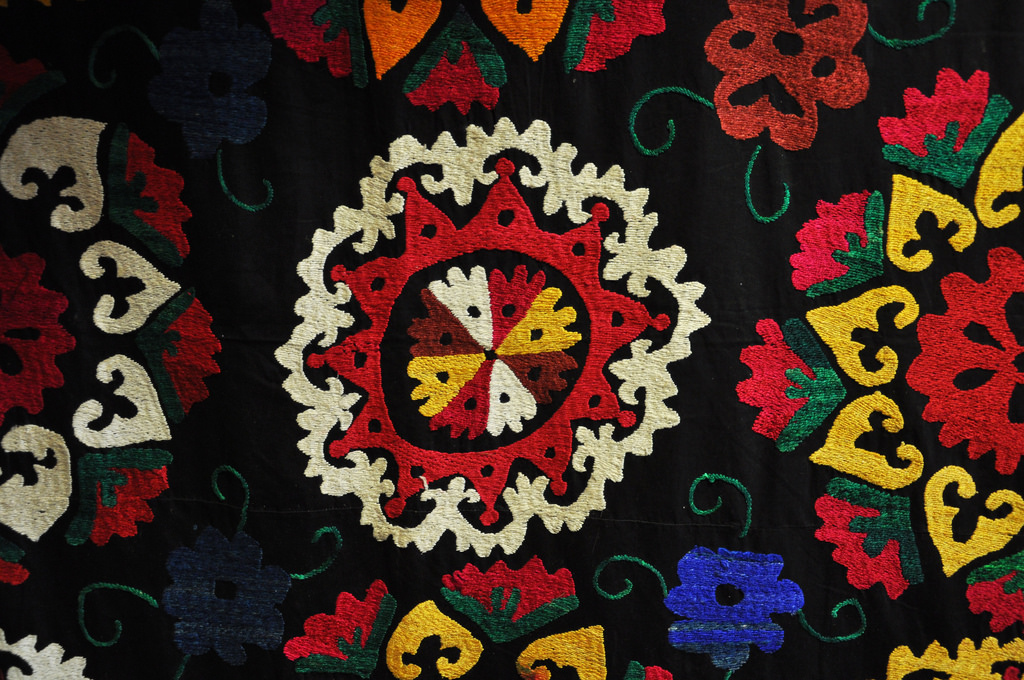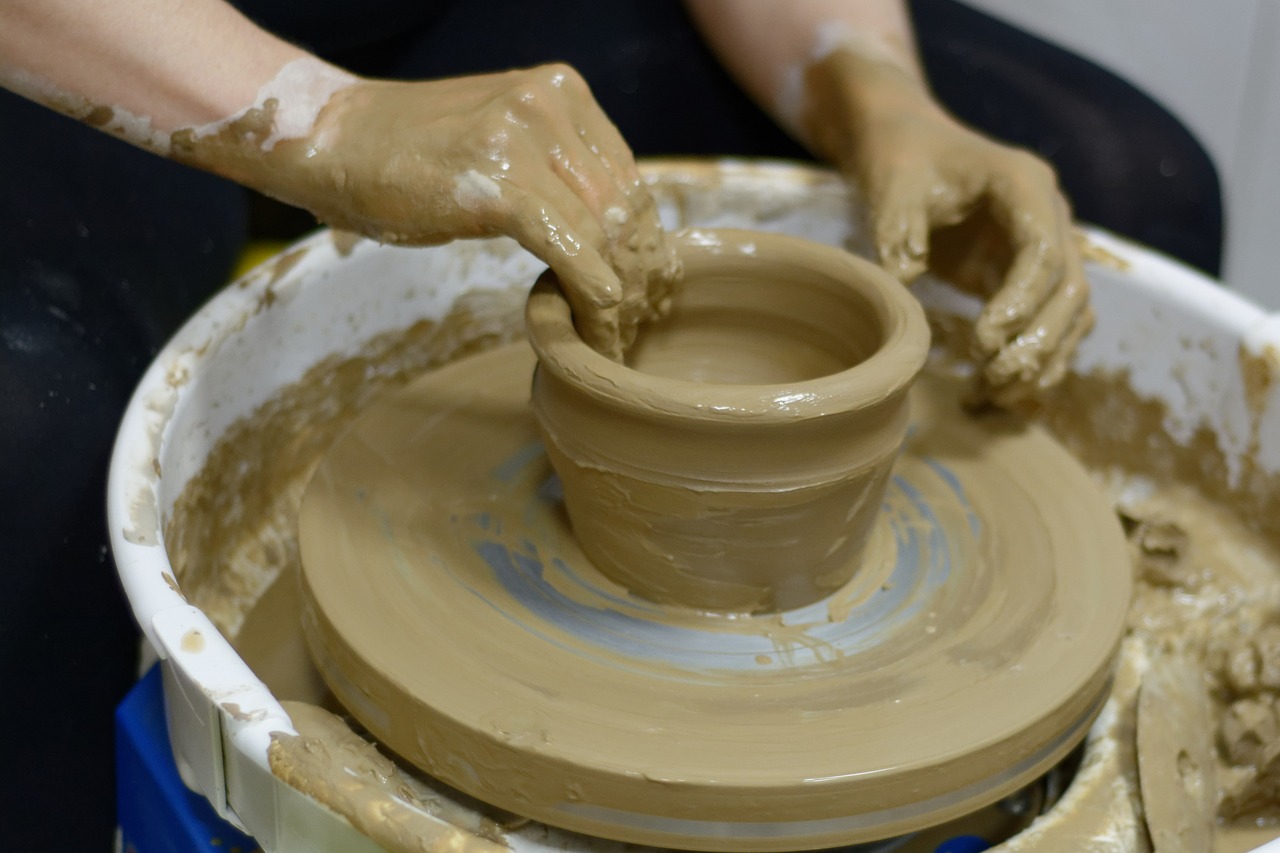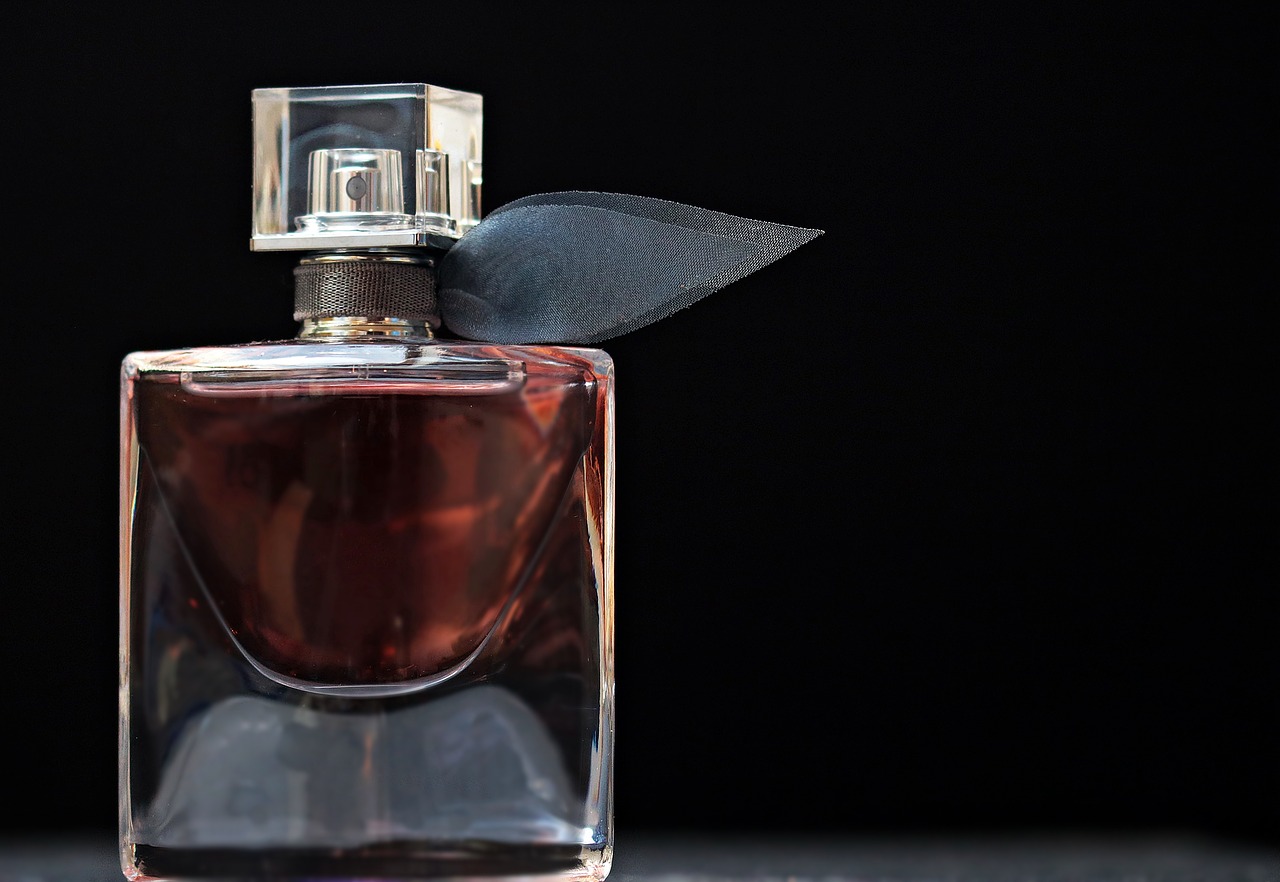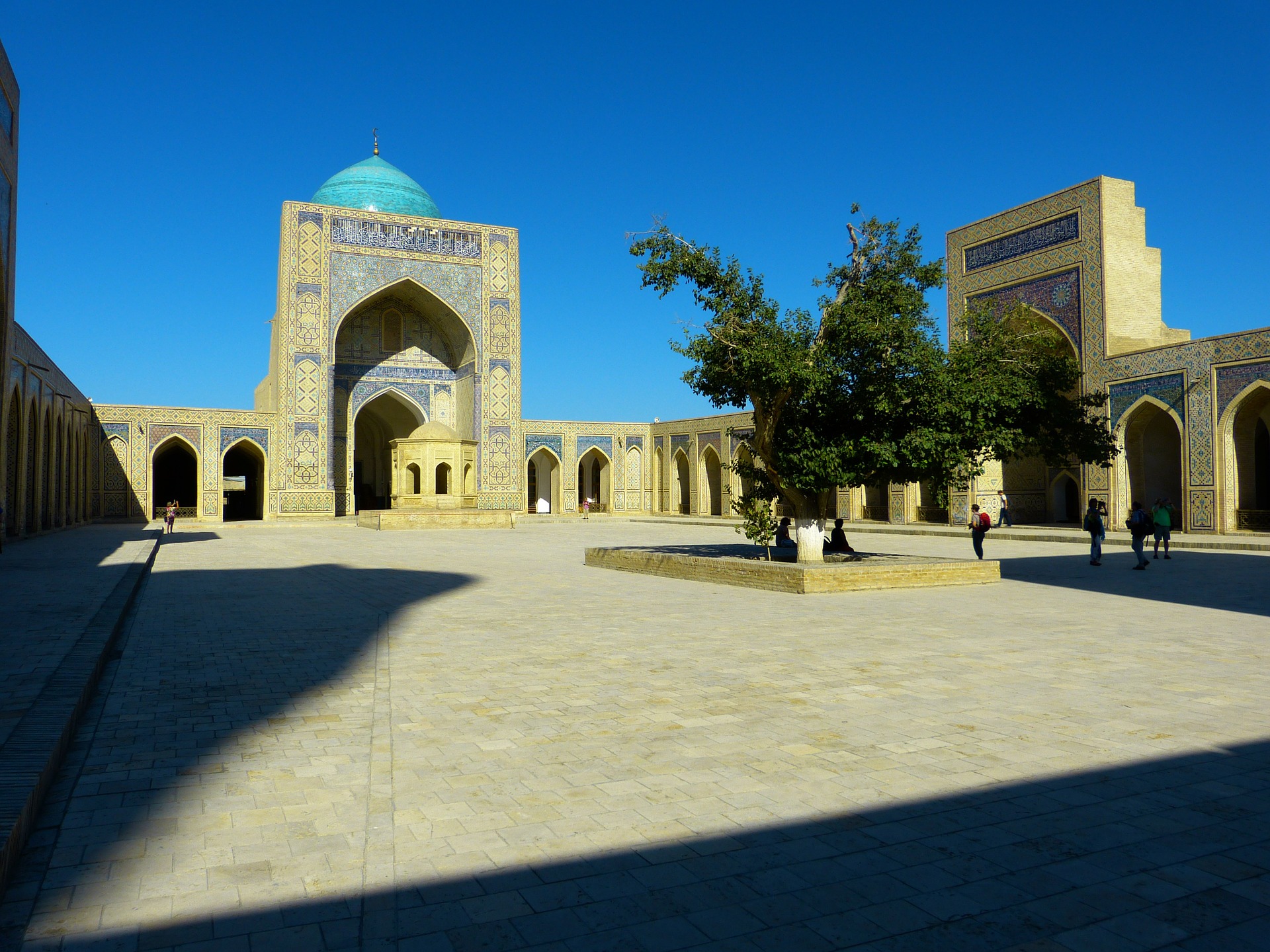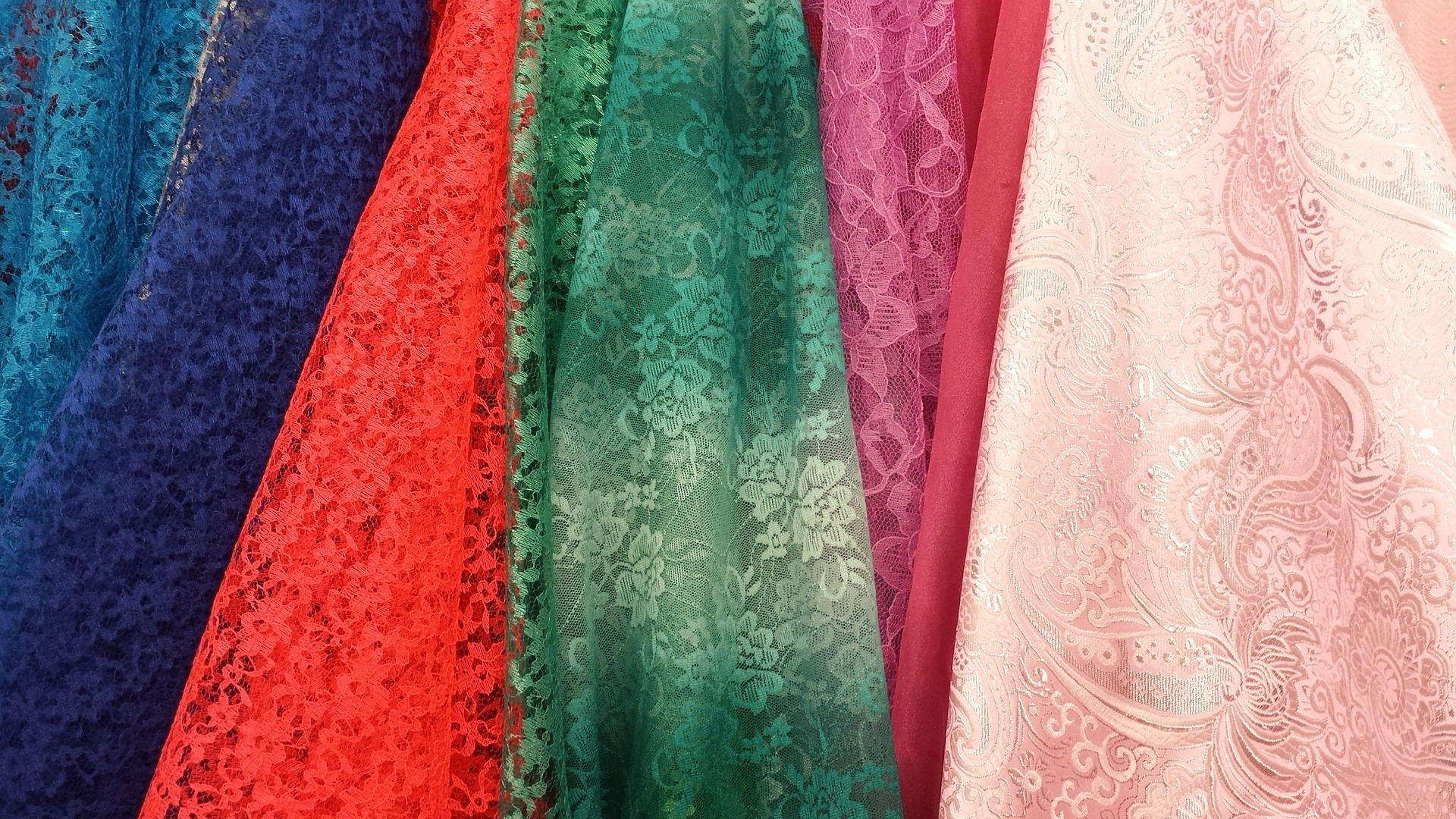Derived from the Persian word for needle, a “suzani” is a type of decorative traditional textile that is made in Uzbekistan and other Central Asian countries. The exquisitely embroidered cloth pieces, which feature vibrant color combinations and intricate needlework techniques, have been made by Uzbek women and girls for centuries. Read on to learn more about this beautiful folk art form.
Silk is the main material used in a suzani.
Since Uzbekistan has been a major center of silk production for close to a thousand years, it’s not surprising that the main material used to make suzanis is silk. The fabric that serves as the base cloth for the embroidered designs is most commonly a blend of silk and cotton, although it’s not unusual for some suzani foundation cloths to be woven entirely of silk. If the suzani is expected to get a lot of heavy use, for example, as a blanket or cover for a horse, the ground fabric may be entirely comprised of cotton. Whatever material is used, the ground fabrics are usually lightly dyed to produce a delicate beige color known as a “tea wash”: this soft color allows the brightly colored embroidery to stand out.
As for the embroidery threads, they are always silk. Today, after close to a century of synthetic dye use, Uzbekistan’s best silk workshops have once again started to use traditional natural dyes to achieve the best results. Natural materials such as pomegranate, walnut, sumac, cochineal, and indigo deliver deep, rich, glowing colors that synthetic dyes simply cannot match.
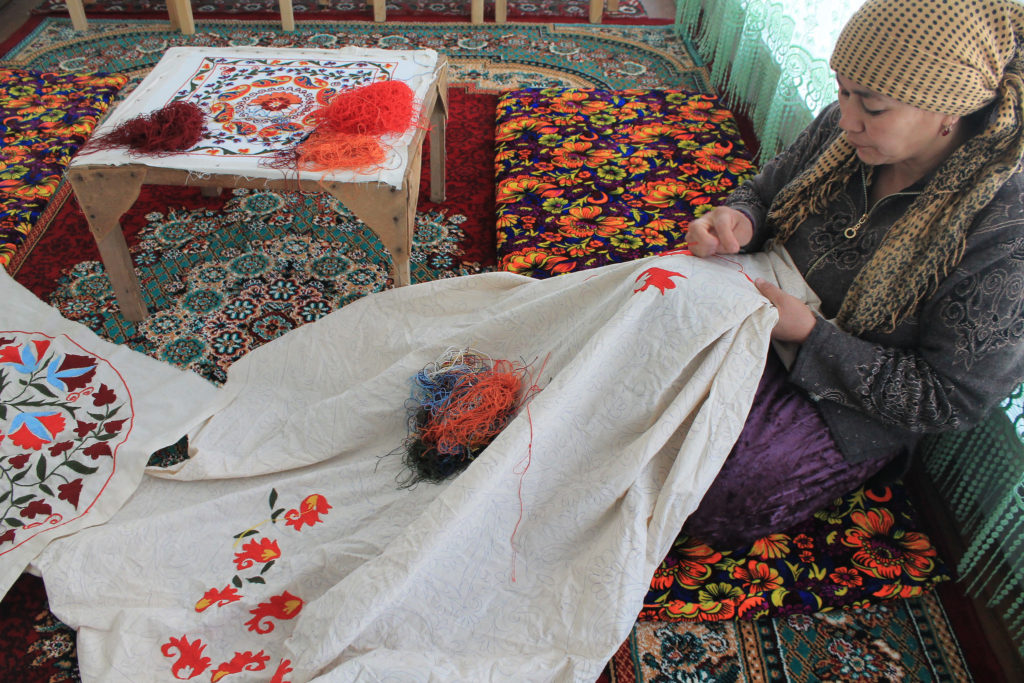
Suzani designs vary by region, but use many of the same motifs and symbols.
Over the centuries, different suzani centers have evolved all over Uzbekistan, each with its own distinctive designs, styles, and effects. This means that suzanis can look quite different depending on where they were made. For example, one type of suzani unique to Tashkent is the palak. The entire surface of the cloth is covered with small, decorated circles. On the other hand, a Bukharan suzani will typically feature a design of flowers on thin branches running the full length of the cloth, as well as round rosettes on long stems (Bukharan suzanis are often considered to be the most spectacular in Uzbekistan).
However, no matter where they are from, most suzanis tend to feature many of the same symbols. For example, pomegranates are a frequent motif, as they represent fertility and are closely associated with wedding rituals. Likewise, in the harsh desert landscapes of Uzbekistan, water and plants are of special value, and so designs featuring ewers or water jugs and flowering garden plants are often seen. Another popular design feature is large circular motifs, often thought to represent the sun and moon, which are likely derived from ancient Zoroastrian cosmological symbols.
Two main stitches are used to embroider a suzani.
While the colors, patterns, and designs featured on a suzani can all be very different, there are typically only two main stitches that are used in suzani embroidery. The first of these is called the basma stitch, or Bukhara couching. In this stitch, long strands of thread are laid across the surface of the base fabric, which are then secured with short, diagonal couching stitches. The technique is effective for filling in large areas of cloth and introducing different textures. For example, some basma stitching can appear smooth and flat, while other areas of basma stitching can take on a dynamic, three-dimensional character. The second type of stitch used is the chain stitch. Often undertaken with a fine tambour hook, similar to a very small crochet hook, chain stitch is most often used for fine linear detail work or to outline areas that have been filled in with basma couching, although some suzanis are entirely embroidered using chain stitch. The intricacy of the patterns and the delicacy of the needlework involved mean that suzanis take many hours of careful labor to complete.
A single suzani is embroidered by many women.
Given the amount of work involved in making a suzani, it’s not surprising to learn that most are the product of shared efforts. With a larger suzani, for example, panels of ground fabric are loosely sewn together so that the full pattern can be drawn on them, and then they are taken apart so that multiple friends and family members can work on the embroidery at the same time. When all the embroidery is complete, the panels are sewn together again. When experienced needleworkers have worked on a suzani, the individual sections will align almost perfectly with one another.

In Uzbekistan, a suzani is a traditional part of a woman’s dowry.
In Uzbek culture, work on a suzani begins as soon as a daughter is born, with the expectation that it will form part of her dowry on her eventual marriage. On a bride’s wedding day, the suzani is traditionally presented as a gift to the groom. Practical as well as beautiful, suzanis are often used as wall hangings, curtains, or bed covers, and therefore play an important role in a married couple’s household.
